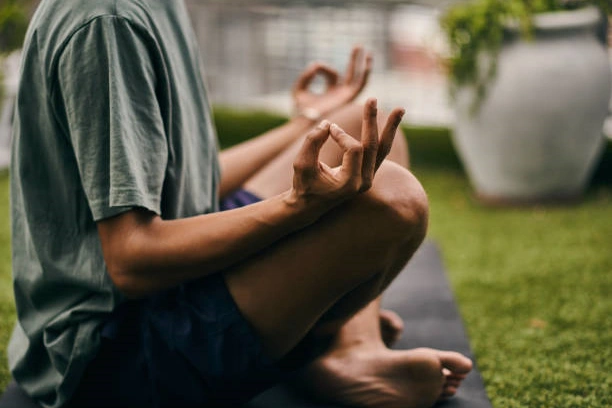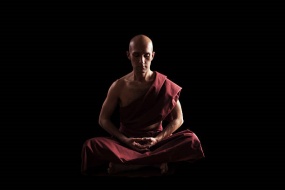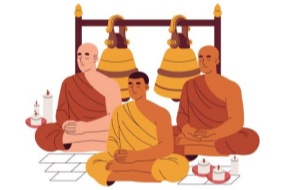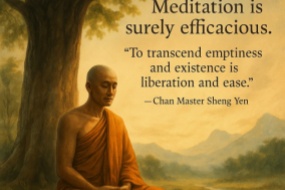Introduction to Meditation Methods and Precautions
What is Meditation?
Meditation refers to sitting cross-legged and bringing the mind to a state of concentration. It is a method used by monks and Taoist practitioners during sitting meditation, where one sits in a specific posture with legs crossed, hands placed in a set position. In Buddhism, meditation is called “sitting meditation” or “Zen meditation.” Practicing meditation can not only promote health and longevity but also enhance wisdom and intelligence.
Meditation involves different levels. For ordinary people, meditation is known as “quiet sitting,” aimed at health maintenance, focusing on the health and longevity of the body and mind.
Meditation requires patience and consistent effort. It demands perseverance and the habit of meditating at a fixed time every day, making it a part of daily life. Over time, it will yield benefits. At that point, if a day passes without meditation, life may feel somewhat out of order. Those who have not meditated regularly for a long time may find it hard to appreciate the significant difference between a chaotic mind and one that is well-organized.
If meditation seems to pass slowly, it indicates that the mind is unsettled and uneasy. The perception of time is closely related to one’s mental state. When the mind is restless, time seems to drag; when it is at peace, time seems to fly by. This is why Buddhist scriptures say that time feels exceptionally long in hell but very short in heaven. When the mind is not at ease, it needs adjustment to achieve tranquility.
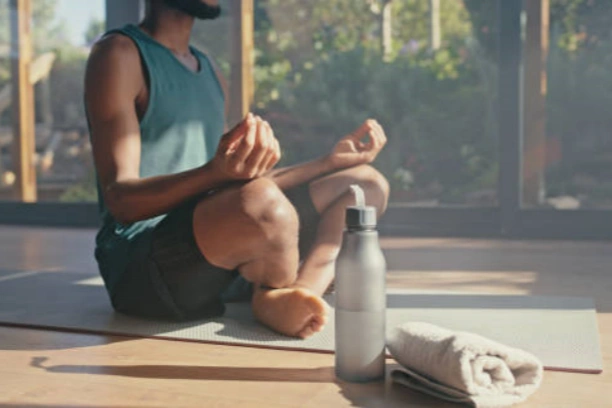
Benefits of Meditation
Meditation serves three main purposes: achieving balance of body and mind, stabilizing the spirit, and cultivating wisdom and compassion.
- Balance of Body and Mind: This refers to physical and mental balance, which is essential for overall health. If a person is physically strong like a buffalo but mentally fragile like a mouse, they cannot be considered healthy.
- Stabilizing the Spirit: The concept of “spirit” is not easy to understand, as it is neither psychological nor physiological, but related to both. It manifests as an intangible function that influences visible behavior.
- Development of Wisdom and Compassion: When one experiences unity of body and mind, as well as harmony with the universe, the spirit can also unify. If one transcends attachment to body, mind, and spirit, wisdom and compassion can naturally emerge. The wisdom referred to here is not knowledge or scholarship but absolute decisiveness.
Precautions for Meditation
- Meditate when the mind is clear and the body is energetic. It is best to establish a regular meditation schedule, such as meditating once in the morning upon waking up and once before bed, for at least 15-20 minutes each time. If possible, extend the session to 30 minutes to one or two hours.
- After brushing your teeth and washing your face in the morning, drink some warm water before meditating. If you feel tired, having a cup of coffee to refresh yourself is also acceptable, but avoid drinking overly strong coffee, as it may make it difficult to settle the mind.
- Avoid meditating when overly full, intoxicated, exhausted, or after strenuous exercise. The body and mind should not be in a fatigued state.
- There is a traditional belief that meditation is not advisable during the hours of midnight and noon. However, since modern lifestyles differ from the past, meditating during these hours is acceptable as long as the sessions are not overly long.
- Learn to relax and practice avoiding eye strain when using your brain. Techniques to relax the eyes and abdomen can help conserve energy. Also, maintain a balanced diet to ensure energy efficiency.
- When the body’s energy is abundant, the channels within the body will be free of obstruction, allowing for smooth circulation in the digestive, circulatory, and nervous systems. Using meditation and exercise helps achieve this state, which is a form of physical conditioning.
- The back is naturally straight during meditation, but over time it may slowly bend. Unless the bending is severe, avoid forcefully correcting your posture, which could create tension. When energy flows freely, the spine will naturally straighten, driven by the flow of energy rather than deliberate control—this is a fascinating phenomenon.
- For those who do not meditate often, sitting with one leg crossed (half-lotus position) is sufficient. If you are thin, sitting with both legs crossed (full-lotus position) may be painful, and if you are heavier, your legs may be unevenly positioned. The half-lotus position tends to be more stable.
